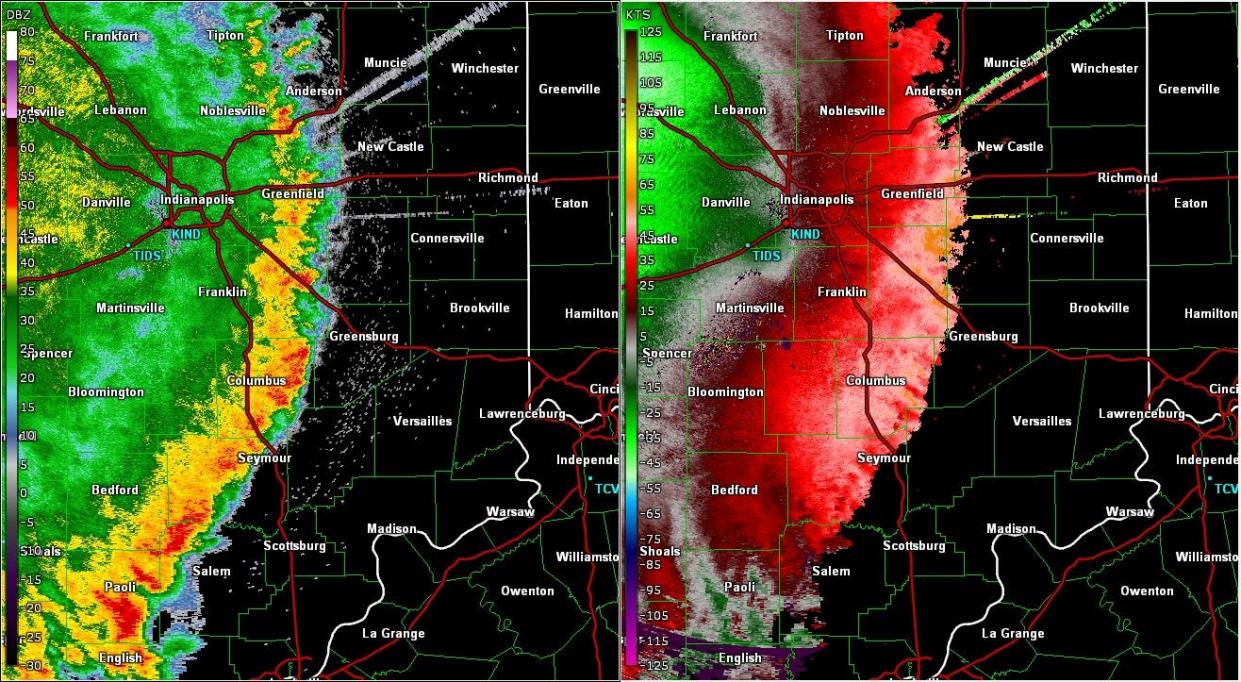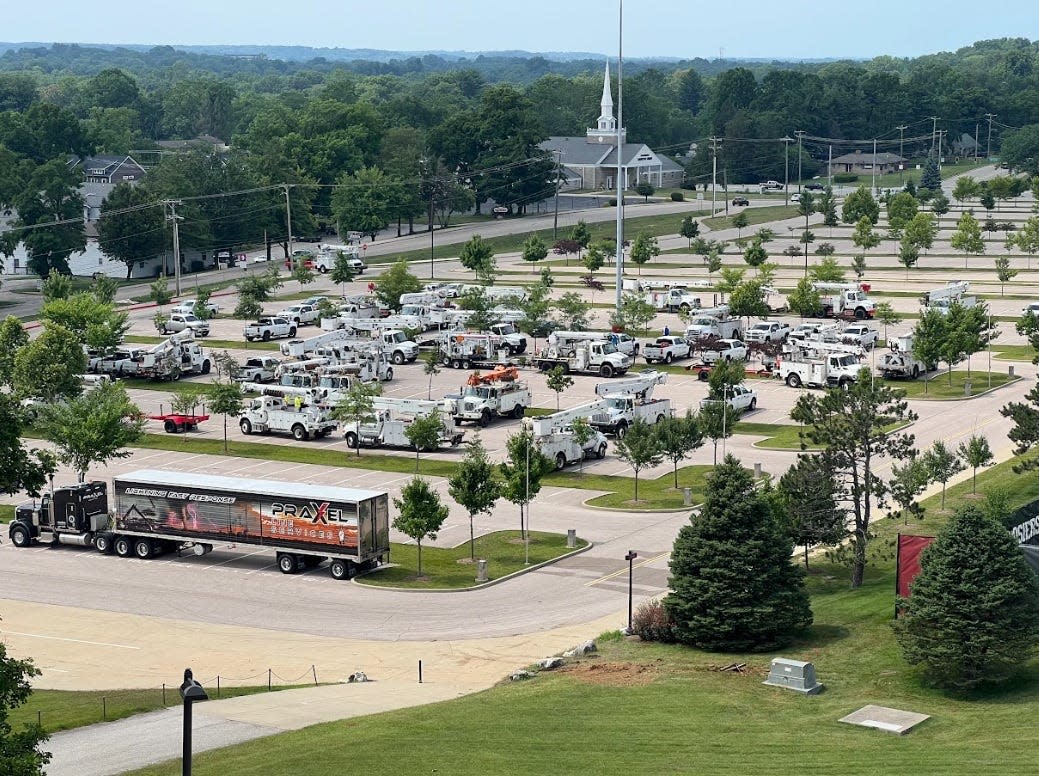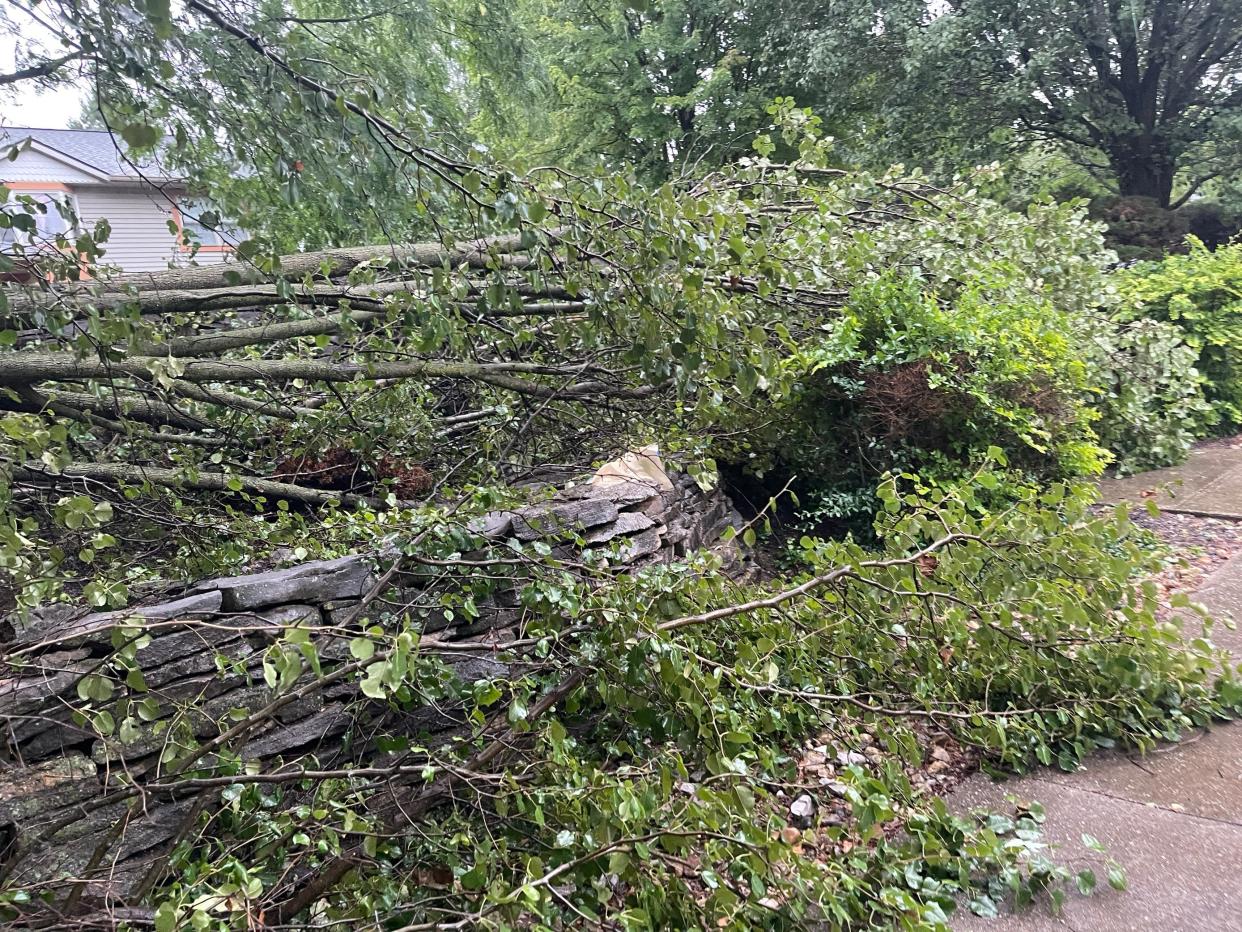Monroe County's response to June 29 derecho criticized
Seventy mile per hour winds from the west that blew into Monroe County the afternoon of June 29 took down hundreds of trees and power lines.
The 10-minute storm, called a derecho, initiated a string of difficult days for many. And spawned inquiries about the county emergency management agency's response — or lack thereof.
The straight-line winds left more than 30,000 households in and around Bloomington without electricity. Thirty hours later, 9,000 homes were still dark. Some outages lasted five days.

People, and their pets, sweltered with no fans or air conditioning. Food spoiled in refrigerators and thawed in freezers. Cell phone and computer batteries died.
And questions arose about whether the county's emergency management system had adequately responded or failed to help out enough.
"Fifteen hours after the storm had disabled electric service to around 40% of the residences in the county, the county government had not posted a statement," Perry Township trustee Dan Combs wrote in dismay on Facebook.
No emergency declared
As the derecho approached, Monroe County Emergency Management Director Jamie Neibel was in contact with the state department of Homeland Security manager who oversees a seven-county area that includes Monroe.
After the storm passed, it was determined no homes or businesses had been lost. No emergency existed.
County highway department crews with chainsaws started the tedious process of clearing roads. Utility company trucks, some from out of state, followed to undertake repairs. They worked night and day, with the last few customers having power restored on Wednesday.
The emergency management office posted power outage updates on its Facebook page through the weekend, using data from Duke Energy and rural power cooperatives. Their phones and internet weren't working, hindering communication efforts.

The agency established cooling stations at eight fire departments, where back-up generator power was always available. There, people could experience air conditioning, rest, charge their phones and then depart.
There were rules: No pets, no showers, no sleeping, no extended stays.
No other emergency actions were taken by the county agency, which is in charge of local disaster response. Their website traffic signal stayed green, indicating no emergency.
"In the days that followed, we relied on our public safety teams, police and fire, to find out the extent of damage and if homes are destroyed and people displaced," Neibel said. "There was no damage like that, and this was nothing like the recent tornado over near Stinesville."
'Perfect response' not guaranteed
Neibel said that looking back, the emergency management agency should have provided more information to the public about efforts to restore power and help available.
"Trying to keep people informed, since they are isolated when things like this happen," she said, should be a priority.
The county's Comprehansive Emergency Management Plan (CEMP) contains a disclaimer under the heading "Limitations" that states: "Monroe County will endeavor to make every reasonable effort to respond in the event of a disaster or emergency. However, local resources and public safety services may be overwhelmed."
Meaty proposition: Red Frazier Bison, Rice's Quality Meats now under same ownership
It ends with this: "There is no guarantee implied by the CEMP that a perfect response to emergency events will be practical or possible."
Trustee: Can I get a generator?
In Perry Township, Combs fielded dozens of emergency requests from residents facing various levels of difficulty in the derecho aftermath.
Trustees are charged with helping people at the poverty level with necessities such as food and rent, but he was hearing from people in higher income brackets seeking assistance.

"Because we help low-income clients as our mission doesn’t mean when there is a community crisis that everyone suddenly qualifies for what was called 'poor relief' until well into the 21st century," Combs said.
Power and phones were out and email inaccessible at the township office. Combs taped a sign on the front door directing people to write down their emergency and contact information and leave the request in the mailbox. He checked the box every few hours.
Frustration took hold when he was unable to secure a generator to provide electricity to a crowded homeless shelter in his township. Forty people sleeping in bunk beds spent three nights at Friends Place with no power.
"There should have been a generator there," Combs said. "But emergency management has no list of contractors who could have provided emergency back-up generators."
The county emergency management plan, mandated by the state, says generators should be available when electricity is needed.
"Monroe County has established a number of emergency agreements with local companies and business for heavy equipment, generators, food, bottled water and other key commodities and resources," the CEMP states.
Denied again: BZA rejects Sojourn House amendment, says it isn't substantive
The Red Cross, often present when disaster strikes, didn't get called because no one was left without a roof over their heads. The organization provides meals, shelter and on-site aid when people are left homeless and shaken in the wake of events such as a flood, tornado or fire.
But that wasn't the case here. No homes were destroyed, and no one was injured. But thousands were affected by the storm long-term.
Early-morning rant
At 1:07 a.m. Saturday, Combs wrote a Facebook post, more a rant, criticizing the county for its lack of response in the 33 hours since the storm blew out of town.
He said the cooling sites weren't much help for people experiencing homelessness in 90-degree heat. He was livid at what he called "total disregard" for vulnerable residents' needs the days after the storm.
And he's mad at the county commissioners, who continue referring county residents who need financial help for necessities to contact their township trustee.
"Assistance is available for rent or utilities through your township trustee," commissioners' president Penny Githens said at the close of Wednesday's meeting. "We want to ensure people stay housed and healthy."
But income guidelines limit who's eligible for township assistance, weather disaster or no. To qualify, applicants must meet the federal poverty standard, which for a family of four is a monthly income of $2,200 or less.
A plan, and being prepared
Combs wants the city and county to develop a plan that works for situations such as this. Fellow trustee Rita Barrow, in Van Buren Township, sees the need as well.
"There ought to be some kind of immediate help available, and hopefully someone will come up with a way to organize volunteers to come together and do that when the help is needed," she said. "There are people out there that want to do that."
Neibel agrees and is in the process of resurrecting a defunct community emergency response team to call on in the future to assess what people need immediately after a disaster.
She conceded that communication among agencies tasked with responding in emergencies must improve so they can work in tandem when the next event strikes.
Neibel said people need to prepare and take personal responsibility for their own safety and comfort, just in case.
She suggested going to the website www.ready.gov to find out how to create an emergency kit filled with basic supplies, from water to a battery-powered radio, needed to survive on your own for several days after a disaster.
'A new reality'
David Henry was Monroe County's emergency response coordinator in 2005 and 2006. He's spent the past 15 years as a homeland security consultant and teaches emergency management classes at Indiana University.
He lives in Van Buren Township and spent 68 hours without electricity after the recent storm. He said local weather-related events of the past two months — tornadoes, toxic air, hail storms and now a derecho — should serve as a warning that emergency preparedness is vital.
Henry urged the county to complete a post-incident assessment to determine what worked and what went wrong after the June 29 storm.
"We need to ask agencies to organize and collaborate to see that the most vulnerable people are OK and that their needs are addressed," he said.
"From my seat out in Van Buren Township, I had no information to work with. There needs to be a spokesperson who explains what's going on."
He said the CEMP, last updated in 2018, is due for a review. The current version doesn't even mention the term "derecho," now spoken of in everyday conversations.
"There should be a convening of all the people who participated where they can put concerns on the table and see what will work," Henry said. "Because there's a new reality for our community."
Contact Herald-Times reporter Laura Lane at llane@heraldt.com or 812-318-5967.
This article originally appeared on The Herald-Times: Monroe County urged to assess emergency response to windstorm


